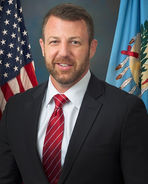
The Charismatic Movement or Charismaticism started from the Revival Movements of the 19th century, strongly influenced by the Radical Pietism of the 18th century, whose germinating core is based on the works and philosophical and theological thought of Philipp Jakob Spener, a German theologian who lived in the 17th century. It exploded in the United States at the beginning of the 20th century and in Europe at the end of the 19th century. It generated the classic Pentecostalism, starting point for the emergence of multifaceted Protestant ministries in their evangelism strategy, preaching and doctrinal methodology, among which the so-called Prosperity Theology was developed. It is important to highlight, in Catholicism, the emergence of the Charismatic Renewal Movement, which allies eminently Pentecostal practices in the propagation of doctrine.
The term charismatic, therefore, describes the adoption (around 1960 by Protestants, and from 1967 by Roman Catholics) of certain beliefs typical of those defined as Pentecostal by Christians of the historic denominations. The term "charismatic" was coined by Harald Bredesen, a Lutheran minister, in 1962 to describe what was happening at that time in the traditional churches. Confronted with the term neo-Pentecostal he said: We prefer the title charismatic renewal in the historic churches. The genesis of the Charismatic Movement, however, is attributed by many to Dennis Bennett, an Episcopal priest, in 1960. His book Nine Clock in the Morning gives a personal account of this period.
charismatic
The term charismatic movement is sometimes confused with the term charismatic. The word charismatic is a broad term used to describe those Christians who believe that the manifestations of the Holy Spirit, the charisms, seen in the first century Christian church (see, for example, the book of Acts), such as miracles, prophecy, and glossolalia (speaking in other languages or tongues), are available to Christians and can be experienced and practiced today. The term is derived from the Greek word χάρισμα derived from χάρις, grace or favor), which is the term used in the Bible, I Corinthians 12-14. The Charismatic Movement however, expresses the arrival of spiritual gifts in the main historical denominations. The "Charismatic Christians" are in almost all church denominations, although some have formed their own denominations, they are known as fire Christians because of their main life aspect.
Pentecostal
Pentecostals and charismatics are characterized by their practice of speaking in other languages and the operation of the gifts of the Spirit. A Pentecostal believer in an experience of religious ecstasy may fluently vocalize unintelligible expressions (glossolalia) or articulate a supposedly natural language previously unknown to the speaker (xenoglossia).
The Charismatic Movement is related to Pentecostalism in that it shares a commitment to the use of spiritual gifts. However, within the Charismatic Movement, this commitment is embedded across the range of historical denominations, and therefore in each context, the theology, culture, and acceptance can vary enormously. The term "Pentecostal" refers to that set of values that emerged from 1906 in the Azusa Street Revival, while the Charismatic Movement refers to a different time, context and theological content. The term "neopentecostal" is sometimes used to describe non-Pentecostal Charismatics who are also part of the Charismatic Movement, or neo-Charismatics.
Neo-Charismatics (Neo-Pentecostals)
An important characteristic of the Charismatic Movement was the complacency of the believer, after discovering the importance of spiritual gifts, to remain within their original denomination. Beginning in the 1950s, many Charismatic Christians went on to form distinct churches and denominations, for which the proper term is neo-charismatic or neo-Pentecostal. Examples include the Vineyard Movement in the USA
Numbers
In 2006, the Charismatic Movement had 192 million, the Neo-Charismatics 318 million, and the classic Pentecostals 78 million.
This means that charismatics are the second largest branch of Christianity after the Roman Catholic Church (although charismatic Catholics do not see themselves as a separate part of the Catholic Church entity). Charismatics are growing at a rate of 9 million per year, totaling about 618 million members in 2009.
_jfif.jpg)



























